Jamison Stone's Blog, page 26
November 9, 2015
Glyph Algorithm - SPAZKEY LLC

GLYPH ALGORITHM
Spazkey LLC
Richard Everhart, Co-Founder and CTO
11/9/2015
Summary
The Glyph Algorithm is a solution to a case of the Boolean Satisfiability problem (k-SAT) and is therefore capable of determining satisfiable interpretations to any given Boolean expression in conjunctive normal form. Unlike tactics utilized by what are presently considered to be the most efficient algorithms for solving SAT, Glyph does not rely on collision detection and backtracking operations as a means of decreasing computational complexity. Rather, the glyph algorithm solves SAT by reducing a given Boolean expression to a new format, known as Glyph form, such that it is absent of the issue normal SAT solvers have in accounting for variable repetition. In doing so, both what operators represent and how these representations are affected by variable repetition are able to be acknowledged with minimal computational effort. This results in an algorithm which is capable of solving k-SAT with a drastically heightened degree of efficiency in comparison to currently available high performing SAT solvers.
Importance
Because Glyph is able to efficiently satisfy Boolean expressions, and due to the applicability of Boolean expressions in breaking modern day encryption, Glyph poses a threat to public key encryption, asymmetric ciphers, and therefore the vast sum of currently implemented cryptosystems. Additionally, due to the prevalence of the Boolean satisfiability problem in various scientific endeavors, Glyph has applicability in Robotics, Artificial Intelligence, DNA research, mathematics, transportation, and similar logistics.
Glyph Form
To avoid having to rely on multiple backtracking operations as a method of minimizing calculation quantity, the Glyph algorithm operates by reducing a Boolean expression to a new format which is referred to as Glyph form. Glyph form relies on acknowledgements that are present in the Boolean expression trees of conventional SAT solvers. Namely, it relies on the associative property of Boolean expressions depicted in the following example.
X0 or X1 or X2 = (X0 or X1) or X2
The importance of this property statutes that in any given clause of a Boolean Expression in conjunctive normal form (CNF), the previous comparisons within that same clause will always have an impact on the outcome of the current comparison. As such, every time a comparison between two literals is analyzed the previous comparisons must be usably remembered. Glyph form is capable of doing so by converting every single literal of a given Boolean expression in CNF to a series of four nodes. Each node represents a possible state of the literal and the corresponding effect it has on the outcome of the current comparison. Due to the fact that this outcome is consistently kept track of, later comparisons are able to be examined with accurate and encompassing knowledge.
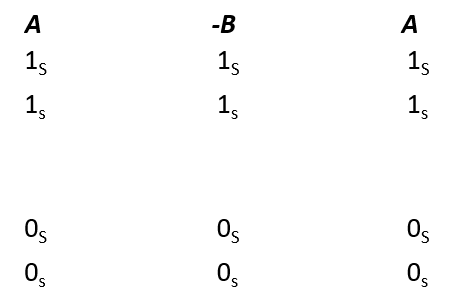
Node structure for A OR –B OR A
Another facet of Glyph form is how it connects these nodes as a method of representing the comparisons provided by operators. Explanatively, every operator in a given Boolean expression in CNF will be converted to a series of connections which are used to connect nodes of adjacent literals to one another. How exactly these connections are applied is determined by the exact orientation of the comparison. In other words, it is determined based on whether the objects being compared are associated with negation operators and whether the comparison is between two literals, two clauses, or a literal and an interval. Nonetheless, there is a limited amount of actual comparison types that exist and as such based on the orientation it is of negligible computation to create these connections. That is to say, in practice there will never be more than eight connections generated for a given comparison.
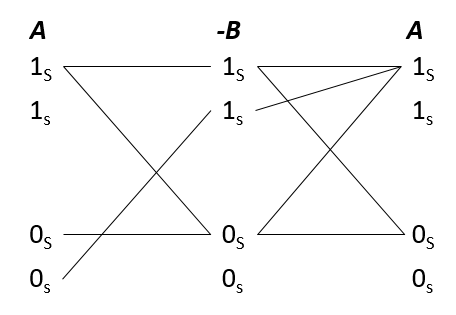
Node structure for A OR –B OR A with connections
While this method of connecting literals is able to represent solutions for Boolean expressions that do not have repetitive atoms, as soon as such an instance exists its representation becomes flawed. To account for this, every single connection must be recursively associated with atom information. The connections stemming from nodes of the first literal will be associated with atom information provided by those nodes. Later connections that are extensions of those connections will be associated with the atom information of previous connections, as well as additional atom information provided by the current nodes. This will continue throughout the entirety of the expression such that every single connection has appropriate atom information applied to it.
It is important to note that there are minor interruptions in this process to ensure that associations leading to impossible atom information are not exhibited. Explanatively, a connection stemming from one node to another may be associated with an atom that cannot possibly go to the target node, and consequentially this association will merely be dropped from the current connection. Following this procedure enables the issue of variable repetition and collision to be avoided with minimum effort. The completion of this procedure, and the aforementioned procedures, will reduce a given Boolean expression into Glyph form.
Solution Determination
To determine satisfiable solutions to a Boolean expression, Glyph form must be operated on such that connections and associations which do not flow throughout the entirety of the expression are removed. When associations which were considered impossible due to how their connections went to nodes with certain definitions removed, it instituted a potential for the same atom information associated with the previous connection to reach a dead end. Here, a dead end is defined to be a situation where a given atom definition associated with a connection leads to a node that has connections which are not associated with that particular atom definition. The following example illustrates this occurrence.

In this occurrence, three nodes are connected to each other through connections. Every node association in a connection is illustrated as a separate line. The red line in the example represents an atom association that was determined to be impossible, and as such that association was removed from the connection. However, this same atom association still exists in the previous connection, and it now is absent of any continuation. Since it has no options for continuation and is unable to flow through the remainder of the expression, it is considered a dead end.
These dead ends must be removed from Glyph form in order for it to be an accurate representation of satisfiable interpretations to the Boolean expression it has been engineered to represent. To do this, whenever there is a dead end the atom information associated with a connection that is responsible for this dead end will be removed. If this operation begins with the right side of the equation, every time an association leading to a dead end is removed from a connection, it has the potential to create more dead ends. By continually removing any dead ends that exist until the beginning of the problem is reached, Glyph form will be revised to accurately represent satisfiable interpretations to the given Boolean expression.
Interpretation of Data
The data given by these operations will be a series of nodes which stem to nodes of adjacent literals through a series of connections. In order to extract solutions, these connections will be used as “paths.” In that, it is meant that every single possible method of following these paths will be considered a solution to the Boolean expression. If upon completion of the culling process there do not exist any possible paths, there are zero solutions to the given Boolean expression and it must be considered unsatisfiable.
October 25, 2015
UMBC Comic Con!
I wanted to offer a huge thanks to Alexander Tancock, president of Comics and Other Media at University of Maryland, Baltimore Countyand for his invitation to showcase RUNE OF THE APPRENTICE at UMBC Comic Con and join their passionate community!
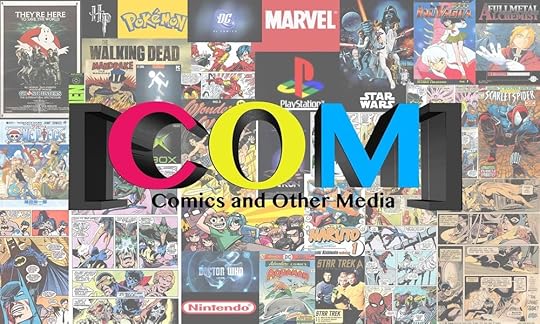
Everyone at UMBC was awesome and I enjoyed meeting folks from the Cosplay Coalition, Living Poet Society, The Visual and Fine Arts Club, Game Developers Club, and Table Top Gaming clubs! Fantastic stuff! It was a pleasure to spend the day with you all, and share in our collective passion for excellent Sci-Fi/Fantasy and fantastic storytelling! Also, getting pizza with many of you was great, too! Invading the parlor with full on zombie makeup was perfect! Thanks for including the "Space Ninja!" Haha! :)
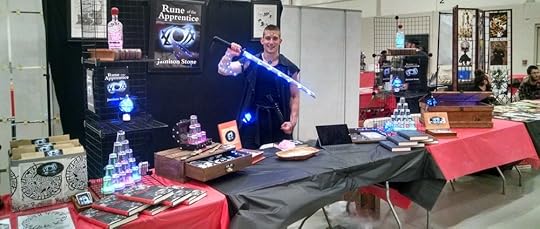

There was some super awesome booths--student run and otherwise with some KILLER zombie makeup, highly detailed Ninja Turtles models, superhero art, and so much more!
I was so busy talking/meeting people, that didn't have a chance to take many pictures BUT I had an amazing time and was super impressed with everyone's commitment, passion, and excitement! Thank you for the invite! See you next year!

UMBC folks this is VERY important:
DON'T FORGET TO CLAIM YOUR CREDITS and then use them to order RUNE!
Many of you awesome UMBC folks have not yet claimed your credits via email and picked up your copy of RUNE. I am able to go to conventions like this (and cover booth/travel costs) due to book sales, so please check your email, claim your credits, and then snag your copy of RUNE OF THE APPRENTICE today! Please don't put it off, it helps me a lot, and allows me to continue to meet awesome people like you at other conventions! THANKS!
As I mentioned, these credits also EXPIRE, so don't wait! Your free copy of RUNE is just a few clicks away! Simply go into your email, "claim" your creds, and then order RUNE (here)for free! EZ Mid, EZ Life! (Yes, that is a Dota2 reference, find me on Twitch here!)
P.S. Below are some SNEAK PEEKS of my new cosplay for Halloween.
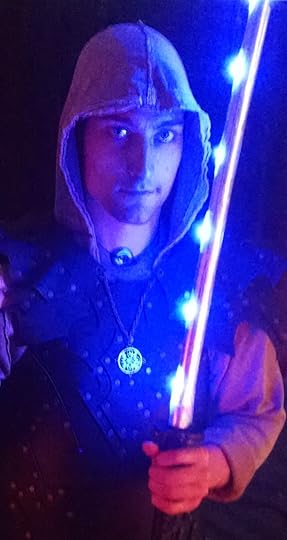

I will be in NYC figuring out more details about the super top secret new Convention I have been working on, and wanted to up my cosplay game for the meetings. I'm still working on the full set, and when it is done, it will be AWESOME! Stay tuned for more on Facebook! Also, if you want to hang in NYC for Halloween drop me a line @StoneJamison
Thanks again to everyone for all the support, it means the world to me! (Don't forget to spend those credits! And you can tell your friends they can get credits, too! All they have to do is create an account and follow RUNE OF THE APPRENTICE right here on Inkshares!)
October 7, 2015
Inkshares Author Vincent Lim - The Cora Chronicles: Genesis (GUEST POST)

The Cora Chronicles: Genesis (TCCG) synopsis:-
“Tactically, the enemy were superior in every way except for their numbers, yet all efforts to repel them had been futile. Cora, one of the last Sentinels, remains the last line of defence against these aggressors. Together with the remnants of the planetary defence forces, she mounts a last ditch effort to neutralize the enemy. However, despite their best efforts, they could not possibly defend against the enemy's planet-killer, Esdraelon. As this final threat looms, Cora and her allies must rally together and protect the one thing that this enemy had come to destroy - the humans.”
This book is a must-read for sci-fi aficionados who want to be immerse in a unique story that embodies the age-old causality dilemma of the chicken and the egg. It has heaps of action, explosions, CQC, epic struggles, a wormhole, time-travel and of course, robots (including very formidable robot-piloting robots or AVATARS -- think GUNDAM mobile suits) and a couple of humans to make the story relatable.
So, what or who came first? Humans or robots?
This one is a no-brainer, right? One just has to dig up history or watch the movie – The Imitation Game, which tells the story of the creation of a smart machine that broke the infamous ENIGMA code and later evolved into the modern-day computer. Perhaps the most telling evidence that we arrived first is actually the lack of evidence of the existence of our non-human predecessors. Surely, given a span of 2,000 years, we would have unearthed something which would point towards the creation of men by vastly superior intelligent beings. Well, actually we have. It’s called the bible... I can imagine seeing little light bulbs flicking on inside your heads right now.
No, I’m not saying God is a robot. Or, am I? *grins slyly*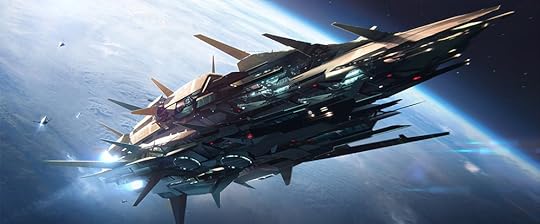
Regardless of your religious affiliations, or lack thereof, if you are a sci-fi nerd like myself then I imagine you’ll be very curious to read about how an aspiring young female robot (the term female is used very loosely here as the term holds little meaning in the context of the story) overcomes adversities, mostly through her own short-comings, to become a fearless Sentinel (a super-robot) who needs to outlast and outwit a tactically superior enemy. You will also come to appreciate some interesting concepts which I have employed, both fictitious and semi-fictitious (read: loosely based on physics) and the visual style of story-telling.
Now, a little bit more about the main protagonist and delving further into the plot.
Cora, a young humani – as this ancient sentient race of robots are called, has just completed the necessary training to ascend. Ascension is a process that transforms a humani into a sentinel, a superior version of the standard humani whose sole purpose is the protection of the humani way of existence. However, just as she’s about to undergo this process, everything is thrown into chaos with the emergence of an unknown enemy who attacks the planet mercilessly, destroying everything and anything that stands in their way.

Together with her companion Jaan, both emerge from the carnage as two of a handful of scattered survivors and immediately find themselves being hunted. As the story unfolds, Cora discovers that with her seemingly evolving abilities come challenges that escalate in difficulty – from going up against enemy soldiers, to enemy AVATARs and to the planet-killer Esdraelon. But perhaps the biggest enemy that this young humani would face is self-doubt. Of course, no self-respecting sci-fi author would allow a conclusion to an epic story without a final epic battle…
Before I sign off, I just wanted to explain that TCCG is the second of three books that I’ve planned. So, if you thought this book was going to blow your mind, then you’re definitely in for a treat when all three books are available.
Finally, a huge THANK YOU to Jamison Stone for providing this space for me to promote my book. Please do check out and pre-order his book RUNE OF THE APPRENTICE if you haven’t done so already. Thank you!
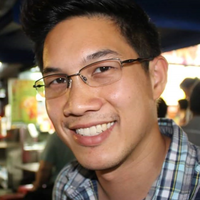
LLAP \V/
Short bio: Vincent Lim is a full-time Buddhist, part-time human, dad, lover, son, brother, engineer, author, ex-volunteer firefighter, blogger, rebel, avenger, justice leaguer, syncretist, nerdist. You can learn more about him and The Cora Chronicles: Genesis HERE.
October 3, 2015
Inkshares Author John Robin on Modern Mythology (Guest Post)
A Fantasy World for the Digital Age Mind - by John Robin
In this highly digitalized age, I’ve often wondered just what I have to contribute as an epic fantasy writer. Why not write science fiction to inform on more immediate issues of our technological future? My background is computer science and mathematics, yet somewhere out of that field of intense academics, I rose up as a storyteller and decided that stories were more important to me. And not just any stories: stories about magic, an imaginary world with its own mythology, a world with its own properties radically different, yet uncannily similar, to our own.

Even though this world is fantastical, it is to me immediately relevant, and it informs on a message just as immediate as science fiction or speculative science articles. Magic as I explore it in my story world, is its own technology, the process of discovering some deep, hidden knowledge of reality and what is possible in reality. Technology – the whole of science since it evolved out of the Renaissance – is no different. Show our iPads and iPhones and cloud-integrated technology to someone from Newton’s day and they would marvel. Show it to someone from the Dark Ages and it would be witchcraft, or devilry.
I consider my writing more modern, even though the historic period invokes a pseudo-Industrial era. I didn’t just do this because I didn’t want to be another medieval fantasy author (in my opinion, that one has been done to death), I did it because I wanted to enter into a world much like the post-Renaissance, where minds were awakening to the infinite possibilities of what reality might offer. Magic is an analog of technology in my world, and the world of Blood Dawn, and subsequent stories to follow, is one undergoing magical revolution – much like ours is undergoing the technological equivalent.

This is how I am re-bottling the myth in this modern era. Though there is something to be said for the beauty of anachronism in epic fantasy, the escape to an older time and a pre-technological world more rooted in nature, I am interested in exploring an alternative fantasy world, one where nature itself is being redefined. What does it mean to enter a new world where what it means to be human is going to change? Is changing every day? Is it good to forget what you were and instead embrace being something newer and better? For example, we are now mostly on laptops without floppy drives. We’ve left floppy drives behind, but do we begrudge the loss of that clunky technological intermediary? Do we really want to go back to a room full of vacuum tubes? Those questions might be applied to the human condition and the human being’s place in the post-Renaissance world. While there is a call – often fear-based – to reclaim our roots, there is also an advantage to moving on and letting go. That is very much the message I like to explore in the fabric of the world I set my tales in.
That is my modern myth. A world that is not round, built by the fires of seven dragons who descended from the void. Dragons who have gone to sleep but will soon awaken. A man who was nearly a god incarnate, who showed humanity a pathway to mastering the secrets of the world, whose dream has faded after he fell from power – but has not been forgotten by the ambitious who saw the potential, and alternative paths, of his vision. A world that is going to change, where the Seven Sacred stones of the Dwarf Men – the residual fires of the world-building dragons – will transform from mysterious components of the earth to the basis of a science that will allow a new age of immortality and mastery over reality to come into being. Much like our world has transformed from one where mysterious electrum coursed through the stones of ancient Greece, to one where electricity is the basis of almost everything that makes our world hum and move.
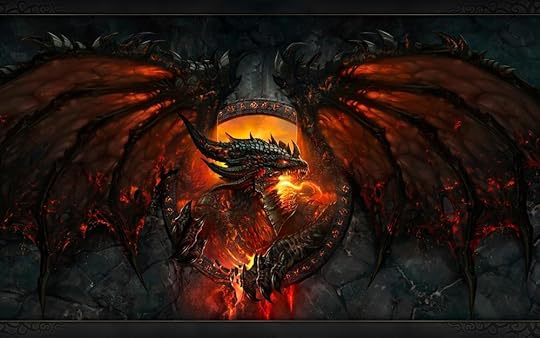
I write about people, people who ask questions about their place in the world, who define themselves and make the best of what they’ve been given. The world and its mythic foundation, however, is its own backdrop, a medium for driving these people toward the questions that will change them and change how they think about themselves in the world. Blood Dawn, and the stories I plan to write for many years to come, is a tapestry, a collection of life stories, all coming together to define the bigger story of our world on the cusp of chance, where we will never be the same again.
And the biggest question that lingers in the back of that – in my story, and in the modern world we live in – is this: is that really a good thing?
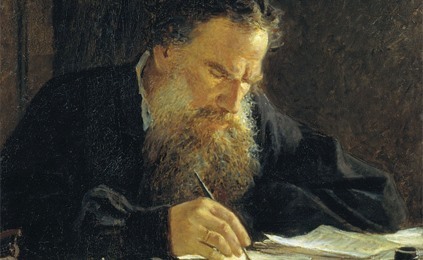
Brief biography on John Robin:
From the time he first looked at Tolkien's map of Wilderland as a ten year old boy, John Robin knew he was destined to make his own world and tell stories about it. So, as he grew up and read the great fantasy epics, he began to create his own world with its own stories, history, and myths.
Over twenty years, he learned the craft of storytelling, writing three novels just for practice (unpublished), and all the while his fantasy world and unique vision as a writer ripened. The evolution of the Internet and the exciting possibilities of what technology just might do for human beings further inspired John to model his magic system and epic tale to also communicate a message about how mastery over one's environment might change the human condition.
After working for many years in academia and adult education, John left his job to pursue a career as a full-time editor, starting his own company, Story Perfect Editing Services. He has edited more than forty stories to date.
John's work has appeared in the Tantalizing Tidbits anthology (“One Who Waits”, a prequel short story to Blood Dawn). Blood Dawn is the first of many stories John plans to write in a series of stand-alone novels that will follow the evolution of a world undergoing magical revolution.
If you’d like to read the opening thirteen chapters, and follow his progress, you can can visit his page on Inkshares HERE.



